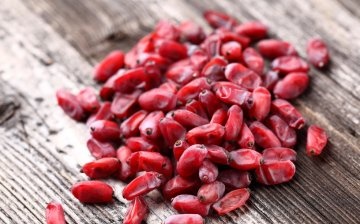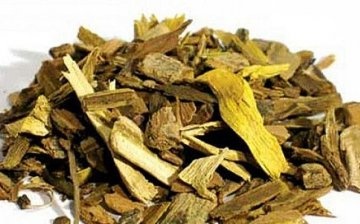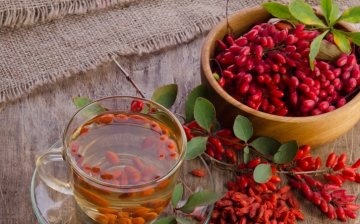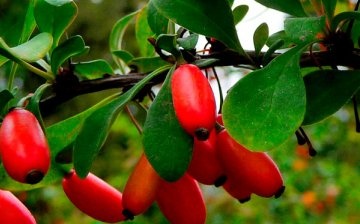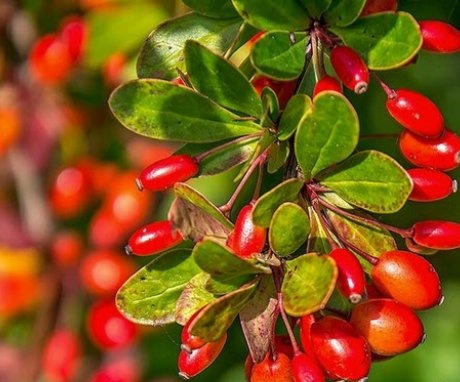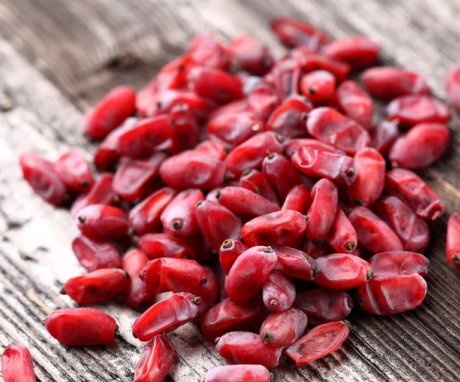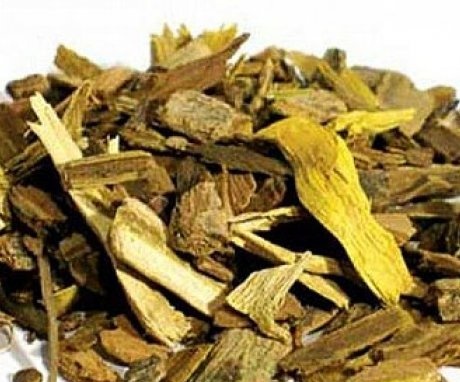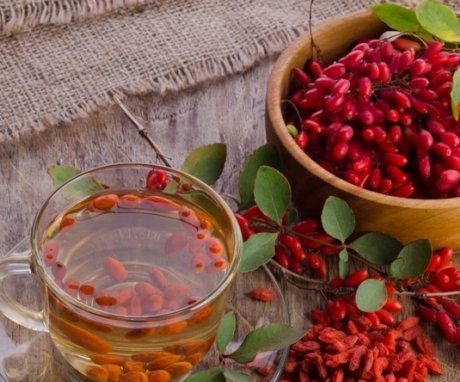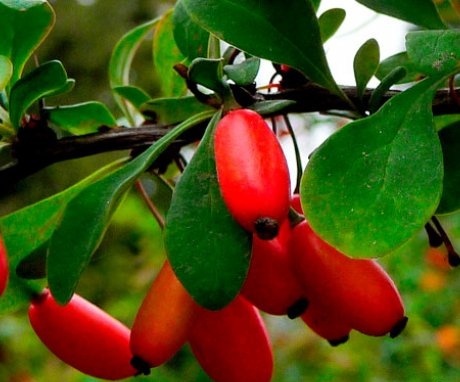Barberry root and berries: beneficial properties and application
Barberry is a beautiful plant in all seasons. At the same time, it is also useful, all its parts, including the root, have a healing effect.
Content:
- Barberry: description
- Useful properties of barberry berries
- Useful properties of barberry root
- Preparation of medicines
- Growing barberry
Barberry: description
We get acquainted with barberry in absentia in childhood. The well-known candies quite accurately convey the pleasant sour taste of its berries. It is a deciduous shrub of the barberry family up to 3 meters high. Root system superficial, branched. About 500 species of this plant are known.
The bush consists of a large number of ribbed branches, both young and old, and their number is constantly growing. The bark of old branches is gray, young ones with a yellow tint. The branches are covered with long (about 0.5 cm) sharp spines, simple or tripartite. In the latter case, the kidneys are located in their sinuses. Branches of the following order develop from the buds. They are covered with serrate leaves, at the ends of which are spiny cilia.
In the spring, in May, the bush is covered with bright yellow bunches of flowers.
Each inflorescence is an axillary drooping raceme, consisting of two dozen small flowers. It blooms for a long time, almost a month. The flowers open gradually, from the top to the bottom. Their strong, pleasant scent attracts bees.
In their place, fruits are formed, exactly the same as on the cover of the famous candy. They fully ripen by the end of September. Fruit color is bright red or black, seeds are dark brown. The berry is juicy, with a thin but firm skin. She allows him to hang from a branch even in winter. True, under the influence of frost it flattens a little. But on the other hand, its taste improves. Fruit weight depends on the variety, but does not exceed 4 g.
Useful properties of barberry berries
Ripe barberry berries contain tartaric, malic and citric acids. Thanks to them, the fruits give the dishes an original taste. It is not for nothing that barberry is called "northern lemon". It is usually used for the preparation of various drinks in the confectionery industry. The fruits are also used at home. They are dried or frozen and added to various dishes as needed. Can be preserved. Then they become less sour. Eat with fried vegetables, rice, meat.
As a medicine, barberry tea is used to strengthen the immune system and treat depression.
It increases appetite, relieves fatigue. Reduces heart rate, dilates arteries, which leads to lower blood pressure. Therefore, hypotensive patients need to use it carefully. Tea made from ripe berries strengthens the walls of the capillaries, serves as a diuretic, lowers the temperature in inflammatory processes.
But green berries of barberry should not be used in any case, because they are poisonous. Ripe berries are elliptical, juicy and soft.
Barberry leaves contain vitamins C, E and various mineral salts. They contain carotenoids. Brew tea from the leaves or make a decoction. They help stop bleeding, perform a choleretic role.Young sour leaves are used in Asian cuisine in salads and pickled. If you cut or break a sprig of barberry, a bright orange juice will immediately appear on the cut. It is used to prepare paint for natural fabrics. Infusion of the bark helps to stop bleeding, including uterine bleeding.
Useful properties of barberry root
In the root of the barberry, as in other parts, there are more than a dozen alkaloids, including oxyacanthin, jatroricin, a very valuable substance berberine. It inhibits the vital activity of a large number of microbes, including yeast, bacteria, and contributes to their destruction. Berberine accelerates the secretion of bile. There are also essential oils, astringents, tannins.
Barberry root is used to treat:
- Astringents found in the root of barberry help with digestive disorders, diarrhea. The berberine located there destroys lamblia, yeast, worms and removes the inflammatory process.
- At the same time, it is used as a laxative of moderate strength. We can say that barberry root has a stabilizing effect on intestinal tone and improves the functioning of the digestive tract.
- Barberry root with the help of the available choleletin cleanses the ducts of the liver, gallbladder, spleen. They increase the flow of bile, which makes it possible to avoid the formation of stones. But if they have already formed, then the use of the drug can aggravate the patient's condition, causing the active movement of stones.
- They use the medicinal properties of barberry root in the fight against jaundice. It helps to quickly cleanse the liver, relieve intoxication.
- Barberry root is also used for diseases of the upper respiratory tract. Its preparations help to remove mucus in case of bronchitis, runny nose, sore throat.
- Barberry will help treat skin diseases, even such complex ones as psoriasis. To do this, its extract is added to a skin care cream. Problem areas are treated 3 times a day.
- It helps to get rid of inflamed acne, boils, conjunctivitis.
- Berberine even stops the growth of cancer cells. Therefore, it is used to create drugs that fight cancer. Self-medication in this case is inappropriate.
Preparation of medicines
Cooking recipes:
- In order to brew barberry tea, a teaspoon of raw materials (bark or berries) is poured with boiling water (200 ml). Insist for 10 minutes, then drink.
- In order to prepare the broth, boil this composition over low heat for 15 minutes. They filter and drink.
- Wine tincture is also used in folk medicine. For its preparation, 150 g of chopped barberry berries are added to a liter of red wine. Mix thoroughly, cover from sunlight. Insist for a month, shaking occasionally. Then peppers are cooled, separating the remnants of berries, add 200 g of sugar. The drug is ready for use. Consume 2 tbsp. spoons before meals. It enhances immunity, improves blood composition, and promotes the outflow of bile.
Barberry is a strong enough remedy. Therefore, improper use can cause some adverse reactions and do more harm than good.
Adverse reactions when using barberry preparations:
- Vomiting
- Nausea
- Slowing heart rate
- Dizziness
- Convulsions
You can not use barberry for pregnant women. In these women, it can cause the uterus to contract and lead to premature birth. Children may develop jaundice. Because of this, barberry can not be used for lactating women. With postpartum hemorrhage, barberry preparations can be used only when the placenta has completely separated from the walls of the uterus.
Sometimes the components of barberry can react with other drugs - this often leads to a decrease or complete absence of their effectiveness.
Therefore, it is necessary to use antibiotics, diabetic and some other medicines only after consulting your doctor. You can use drugs only in the indicated doses, because the use of a larger amount can lead to poisoning of the body. Barberry can be treated for no more than a month.
Growing barberry
Barberry is an ancient plant. Even the ancient Babylonians knew and used it to purify blood. Barberry grows wild and domesticated on almost all continents, in areas with subtropical and temperate climates. It is unpretentious to growing conditions, so anyone can grow a barberry.
You just need to be prepared for the fact that without strong gloves and a sharp pruner you cannot approach it.
Barberry propagates by root shoots, seeds and cuttings:
- The root process is dug up by the root and planted in another place. The distance between the bushes is about 2 m. Can be grown as hedgeunless you intend to use the root of the plant. Then the distance between the plants is reduced to 1 m. A crown is formed for such plantings, cutting twice per season.
- Seeds of ripe fruits are collected. They are rather small, so the squeezed fruits are peeled through a sieve. Sowing can be done in autumn, immediately after harvest, or in spring. In this case, you need them in advance. stratify in wet sand at temperatures close to zero degrees, several months (2-5). You can mix the seeds with sand, moisten a little and place in a cellar or refrigerator. Periodically, the sand is gently mixed and moistened so that it does not dry out and is filled with air. In the spring, when the seeds hatch, they are sown in a slightly shaded place to a depth of 1 cm. This will allow them to survive in particularly intense heat. It is better to choose fertile and loose soil. Germination rate is about 100 percent. When the seedlings have a pair of true leaves, they are thinned out, leaving no more than 3 pieces by 10 cm. Watering, weeding weeds. Let them grow there for another year. On the third, seedlings can be planted in a permanent place.
- Growing with semi-lignified cuttings requires a little more effort. A greenhouse is prepared with soil half sand. Pour sand mixed with charcoal on top, up to 3 cm thick. cuttings up to 10 cm long a couple of centimeters below the last knot. Remove all the leaves, set the cutting to a depth of 2 cm in the sand. It should not touch the ground. From above, the greenhouse is covered with glass or polyethylene, which will maintain the desired humidity. Watering, making sure that the soil does not dry out. A year later, they are planted in a permanent place.
Barberry tolerates heat and cold well, does not require frequent watering. Only the preparation of raw materials is difficult because of the sharp thorns of the plant.
More information can be found in the video:





